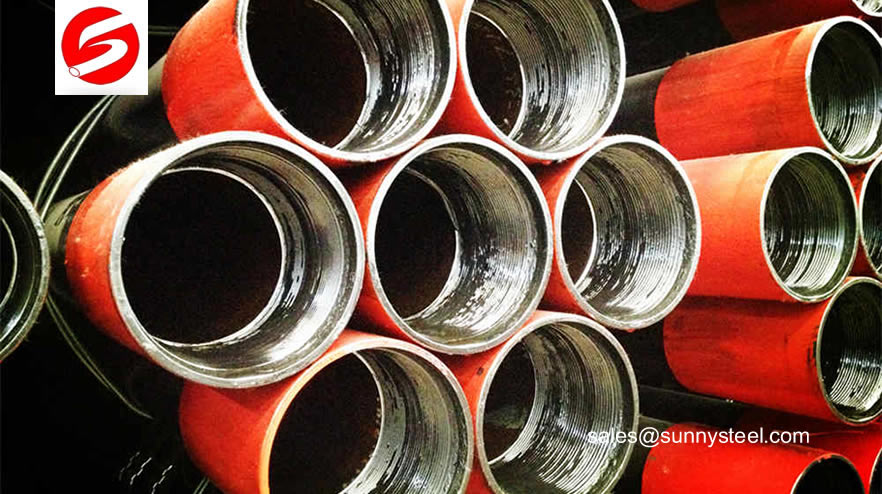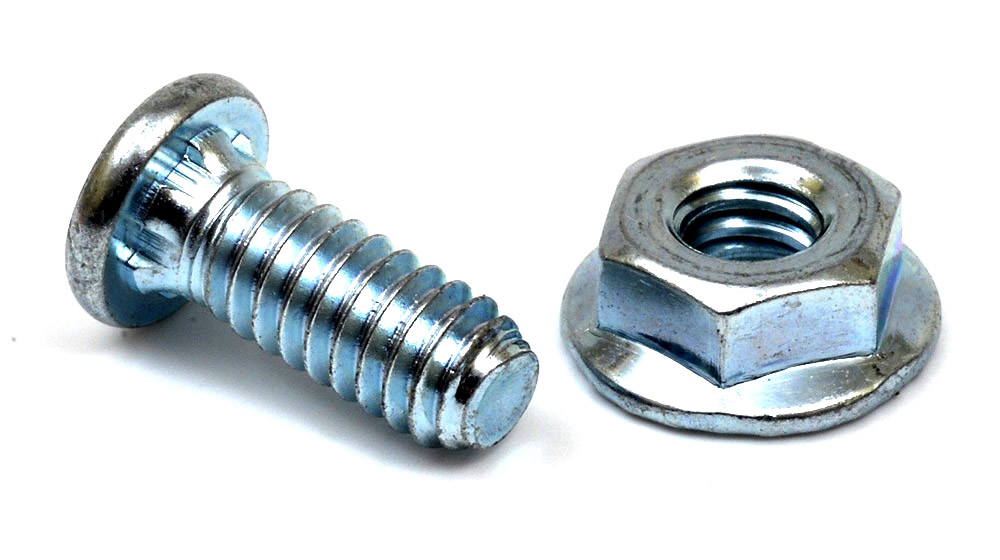We are manufacturer of ASTM A53 Gr.B Pipes and supply high quality ASTM A53 Gr.B Pipes in both large and small quantities worldwide & offer you the best prices in the market.
We have a team of experienced professionals with years of experience in manufacturing.
Pipe, Steel, Black and Hot-Dipped, Zinc-Coated, Welded and Seamless.
Standards: ASTM A53/53M (ASME SA53/SA53M)
Size (mm):
- O.D.: 6.0mm - 180 mm
- W.T.:1mm - 30 mm
- Length: max 11800mm
Steel grade:
- ASTM A53 Grade.A
- ASTM A53 Grade.B
Application:
For mechanical and pressure use, and also for transporting steam, water, gas and etc.
Mill test certificates will be issued according to EN10204/3.1B .
ASTM A53 pipe (also referred to as ASME SA53 pipe) is intended for mechanical and pressure applications and is also acceptable for ordinary uses in steam, water, gas, and air lines. It is suitable for welding, and suitable for forming operations involving coiling, bending, and flanging, subject to certain qualifications.
Materials and Manufacture
The steel for both seamless and welded pipe shall be made by one or more of the following processes: open-hearth, electric furnace, or basic-oxygen. The weld seam of electric-resistance welded pipe in Grade B shall be heat treated after welding.
Applications: heat exchangers, condensers, heat transfer equipment and similar pipes.
Note:
DN — Nominal Diameter
NPS —Nominal Pipe Size
Grade and Chemical Composition (%)
| Grade | C | Mn | P | S | Cr | Mo | Cu | Ni | V |
| Grade A | ≤0.25 | ≤0.95 | ≤0.05 | ≤0.045 | ≤0.40 | ≤0.15 | ≤0.40 | ≤0.40 | ≤0.08 |
| Grade B | ≤0.30 | ≤1.20 | ≤0.05 | ≤0.045 | ≤0.40 | ≤0.15 | ≤0.50 | ≤0.40 | ≤0.08 |
| Continuous-weld | ≤0.08 | ≤0.06 |
Mechanical Properties
| Grade | Rm Mpa Tensile Strength | Mpa Yield Point | Elongation | Delivery Condition |
| A | ≥330 | ≥205 | 20 | Annealed |
| B | ≥415 | ≥240 | 20 | Annealed |
A53 Grade B Seamless steel pipe is our most polar product under this specification and A53 pipe is commonly dual certified to A106 B Seamless pipe.
- A53 pipe comes in three types (F, E, S) and two grades (A, B).
- A53 Type E has an electric resistance weld (Grades A and B)
- A53 Type S is a seamless pipe and found in Grades A and B)
- A53 Type F is manufactured with a furnace butt weld or may have a continuous weld (Grade A only)
Packing:
- Bare packing/bundle packing/crate packing/wooden protection at the both sides of tubes and suitably protected for sea-worthly delivery or as requested.
- Both ends of each tube will indicate the order no., heat no., dimensions, weight and bundles or as requested.
The manufacture of electric resistance welded pipe
While manufacturing ERW steel pipes, only high-quality, continuous-cast, fully killed, control-rolled, fine-grain, low-carbon steel is used.

ERW pipe FAQs
ERW steel pipes and tubes are used in various engineering purposes, fencing, scaffolding, line pipes etc.
ERW Pipe coating
The surface condition of steel pipe is known as the environment that this is through the steel pipe coating with the surrounding soil insulation, pipe surface condition is different from the four weeks the soil.
Advantage of ERW pipe
The alloy content of the coil is often lower than similar grades of steel plate, improving the weldability of the spiral welded pipe. Due to the rolling direction of spiral welded pipe coil is not perpendicular to the pipe axis direction, the crack resistance of the spiral welded pipe materials.
Electric resistance welded
Current is then passed between the two edges of the steel to heat the steel to a point at which the edges are forced together to form a bond without the use of welding filler material. Initially this manufacturing process used low frequency A.C. current to heat the edges. This low frequency process was used from the 1920’s until 1970. In 1970, the low frequency process was superseded by a high frequency ERW process which produced a higher quality weld.
Difference between ERW, SSAW, LSAW
Steel pipe for pipe technology, can be divided into (SML), mainly as the Oilfield internal transportation pipeline and small-diameter high-pressure natural gas pipeline, used for a small number of long-distance gas pipeline, the vast majority of long-distance pipeline with Direct seam high frequency (ERW), spiral submerged arc (SSAW), LSAW three (LSAW).
High Frequency Resistance Welding
A continuous helical fin is attached to the base tube by high frequency electric resistance welding in order to give an efficient and thermally reliable bond. Fins can be either solid or serrated (segmented). The weld produced in this process is a true forge, blacksmith weld. This type of weld is comprised of a fusion between two portions of parent metal without the introduction of a filler material. The weld is simply produced by heating the interfaces to be joined to a plastic state and applying pressure.
Used in boilers, furnaces and fired heaters for efficient heat recovery.
ERW pipe technical requirements
ERW steel pipes and tubes are used in various engineering purposes, fencing, scaffolding, line pipes etc.
Manual ultrasonic testing of ERW steel pipe welding joint
The residual defects in erw steel pipe ultrasonic testing is an important reason for failure of the weld, causing defects missed is inappropriate due to a probe parameter selection, disturbing wave effects and burr flaw echo echo does not distinguish between such a variety of factors.
Manual ultrasonic testing of ERW steel pipe welding joint
The residual defects in erw steel pipe ultrasonic testing is an important reason for failure of the weld, causing defects missed is inappropriate due to a probe parameter selection, disturbing wave effects and burr flaw echo echo does not distinguish between such a variety of factors.
ERW pipe weld contour shape
Scrape the inside welds very smooth burr, weld and base metal transition very smooth. Usually a steel pipe wall thickness is 11.9mm, a thickness range of extrusion welds typically range from about 25mm to either side of each weld, the weld portion after the removal of burr than other parts of the base material thickness of about 10%.
ERW steel pipe products range
ERW steel pipes and tube are available in various qualities, wall thicknesses, and diameters of the finished pipes.
The welding pressure of erw pipe
Straight seam welded steel pipe, according to welding process can be divided into high frequency resistance welding and submerged arc welding, longitudinal submerged arc welded is short for SAWL, high-frequency straight seam resistance welding is short for ERW.
ERW Pipe's development prospects and facing issues
Resistance welding is short of ERW steel pipe with number of advantages, such as high productivity, low cost, good dimensional accuracy, beautiful appearance. However, in the past, due to the poor reliability of the weld, great limitations on the use. The proportion of small pipe production.
ERW pipe welding defects
Analysis of the frequency of inclusions in steel production, the pre-arc fusion inadequate inadequate edge fusion, central fusion deficiencies, stick welding, casting welding, porosity, skip welding and other welding defects nine common causes and preventive measures.
ERW pipe issues and defects
ERW pipe issues and defects is related to raw materials, production methods, process conditions, equipment status and personnel. Product defects that appear in the production process by the above factors and constraints.
Role of skin effect in erw tubes
Also known as the "skin effect," When an alternating current through a conductor, due to induction effect caused by the larger cross section of the conductor current distribution is uneven, the closer the conductor surface current density.
ERW pipe weld surface
High-frequency electric resistance welding (ERW) steel pipe production, internal weld surface treatments are generally incomplete curettage (left weld reinforcement) and complete curettage (scraping will form the inner surface of the groove) in two ways, and the results were not ideal, will affect the overall performance of the steel pipe. Taking into account the thickness of ERW pipe welds, strength and reliability of ultrasonic testing, squeeze through thick welds - calibrating processing, optimized contour shape welds to improve the overall performance of ERW pipe.
What is Welding?
Welding is a fabrication or sculptural process that joins materials, usually metals or thermoplastics, by causing coalescence. This is often done by melting the workpieces and adding a filler material to form a pool of molten material (the weld pool) that cools to become a strong joint, with pressure sometimes used in conjunction with heat, or by itself, to produce the weld. This is in contrast with soldering and brazing, which involve melting a lower-melting-point material between the workpieces to form a bond between them, without melting the workpieces.














Comments